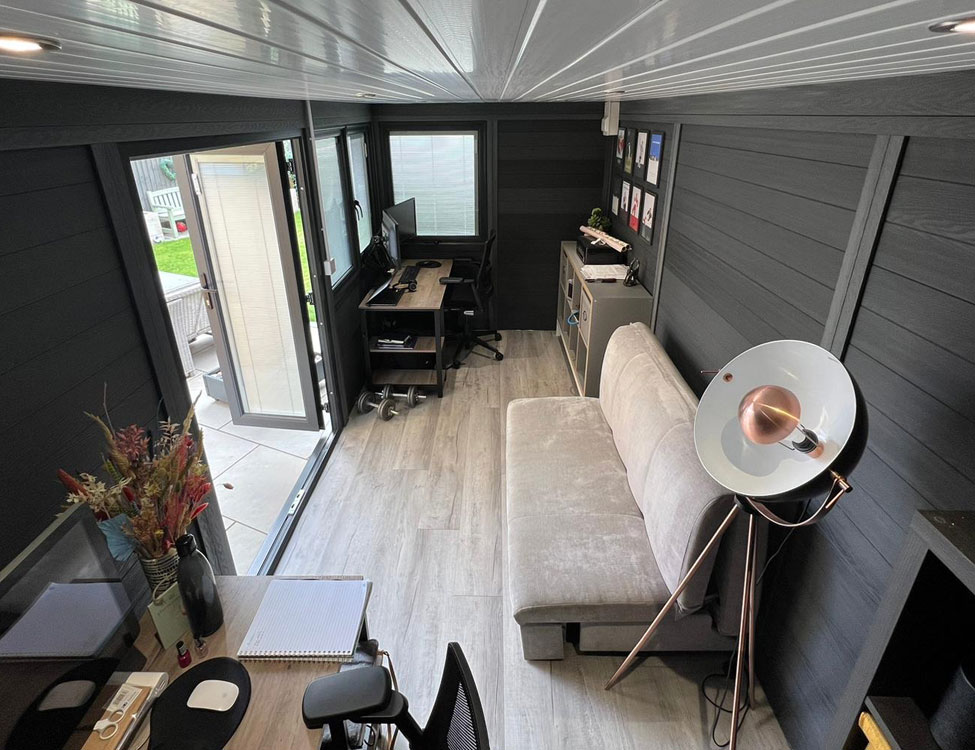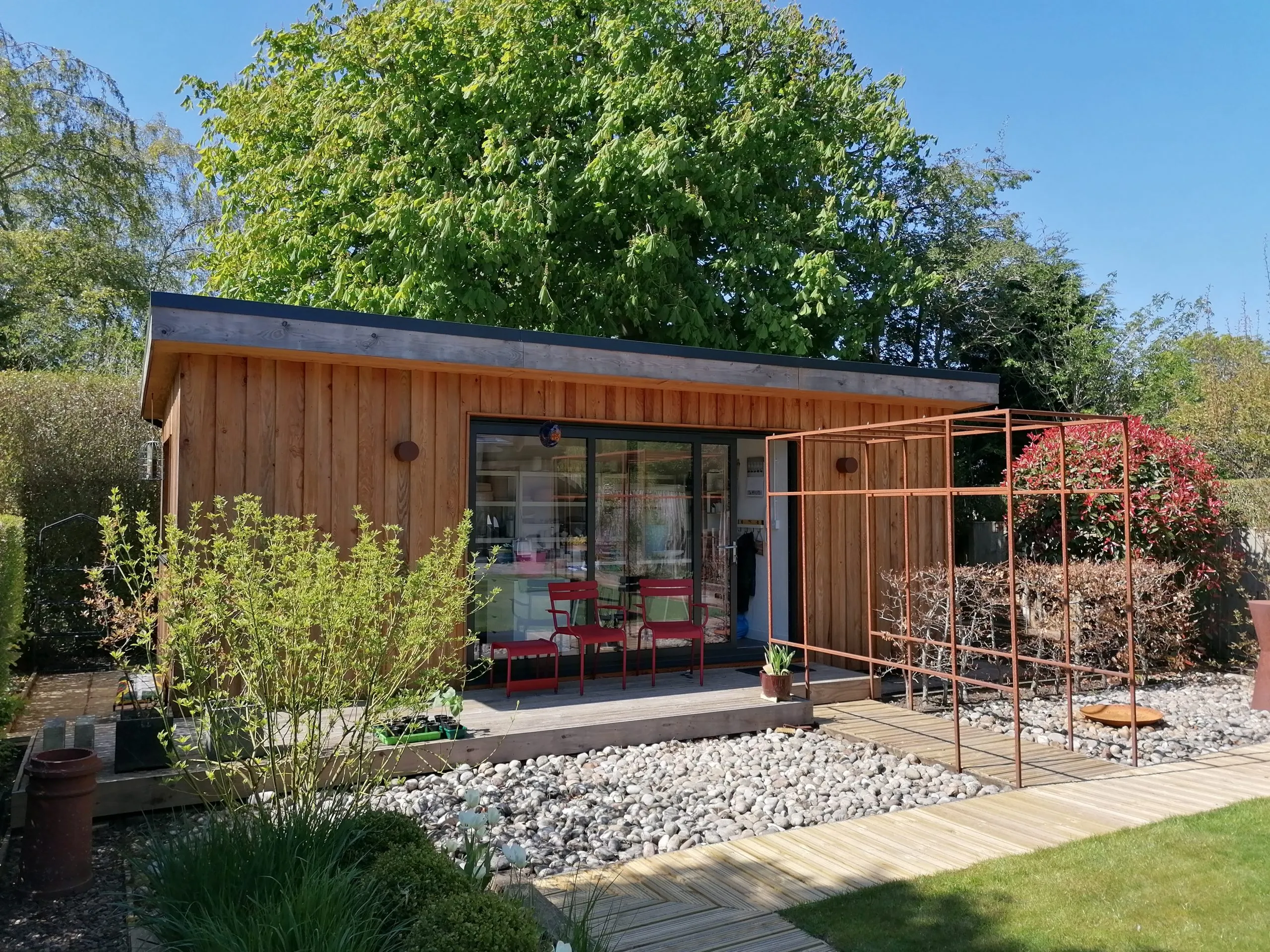Creating a garden office in Sheffield is the perfect way to transform your outdoor space into a productive and inspiring work environment. Whether you’re working from home, running a small business, or need a quiet retreat for creative work, a well-designed garden office can significantly enhance your work-life balance. However, the process of designing your dream garden office requires careful planning and attention to detail to ensure that it meets your needs and fits seamlessly into your property.
In this complete guide, we’ll walk you through everything you need to consider when designing your garden offices sheffield—from planning and design elements to materials and functionality.
1. Planning Your Garden Office
Before you start designing your garden office, it’s essential to plan the space properly. Think about how you’ll use the office, how much space you need, and where it will be located on your property.
- Identify Your Purpose: Are you using the garden office for work, creative projects, meetings, or as a personal retreat? Understanding the purpose of the space will influence the size, layout, and furnishings.
- Assess the Space: Consider the available space in your garden. Measure the area where you’d like to place your office and think about the location of existing structures, trees, and any potential obstructions. Ensure the site is flat and accessible.
- Consider the Layout: How many people will use the office at once? Do you need extra storage? Will you require separate work areas? Planning a functional layout is key to ensuring that your garden office meets your needs.
- Legal Considerations: Check local planning regulations in Sheffield before building your garden office. In many cases, garden offices fall under permitted development, but it’s still important to verify the specifics with your local council to avoid potential issues.
2. Choosing the Right Location
Selecting the ideal location for your garden office is crucial, both in terms of aesthetics and functionality.
- Privacy and Quiet: Choose a spot that is away from noisy areas of your property, like busy roads or areas with high foot traffic. A peaceful location at the end of the garden or surrounded by trees can create a calm, quiet atmosphere perfect for work.
- Sunlight and Views: Take advantage of natural light by placing your office in a position where it receives sunlight throughout the day. Large windows or glass doors can help you connect with your garden and enjoy beautiful views while working.
- Accessibility: Ensure that your garden office is easy to access, whether from your home or directly from the street. A well-placed path or driveway should connect your home to your office, and if possible, allow for parking for visitors or clients.
- Weather Protection: If your garden is prone to strong winds or heavy rain, consider positioning the office in a sheltered area. You may also want to invest in weatherproof materials for the building itself to ensure durability and comfort.
3. Design and Style of Your Garden Office
The design of your garden office should reflect both your personal style and the functional needs of the space. There are a variety of styles to choose from, depending on your tastes and the look you want to achieve.
- Modern Minimalist: If you prefer clean lines and simplicity, a modern minimalist design with large windows, flat roofs, and neutral colors will create a sleek and professional environment.
- Traditional: For a more rustic, classic look, a traditional wooden garden office with a pitched roof and timber cladding can blend beautifully with your garden and give a warm, inviting feel.
- Contemporary: Combining elements of modern and traditional design, a contemporary garden office may incorporate natural materials like wood with industrial elements like steel or glass. This style is ideal for those looking for something a little more unique and bold.
- Sustainability: Many homeowners are opting for eco-friendly designs that include sustainable materials, solar panels, green roofs, and energy-efficient windows. If sustainability is important to you, be sure to incorporate environmentally conscious choices into your garden office design.
4. Choosing the Right Materials
The materials you choose for your garden office will directly impact its appearance, functionality, and durability. Here are some key material considerations:
- Wood: Timber is a popular material for garden offices due to its natural look and eco-friendly properties. It’s available in many types, such as cedar, pine, or oak, each with its own aesthetic and maintenance requirements.
- Metal: Steel or aluminum structures can create a modern, industrial look while offering strength and durability. Metal buildings often require less maintenance compared to wooden structures but may need additional insulation to ensure comfort.
- Glass: Large windows and glass doors can help create an open, airy feel in your garden office while allowing you to enjoy views of your outdoor space. However, be mindful of privacy and UV protection when incorporating glass into your design.
- Composite Materials: For a low-maintenance, long-lasting option, consider composite cladding or decking. These materials can withstand the elements without warping, fading, or rotting like traditional wood.
- Insulation: Proper insulation is essential to maintain a comfortable temperature in your garden office year-round. Whether you choose spray foam, fiberglass, or insulated panels, make sure your office is properly insulated to prevent heat loss in winter and overheating in summer.
5. Interior Design for Comfort and Productivity

The interior of your garden office is just as important as its exterior. Design the space with both functionality and comfort in mind to create an environment that supports productivity and well-being.
- Ergonomic Furniture: Invest in comfortable, ergonomic furniture to ensure that you’re working in a healthy posture. A good desk and chair, along with other ergonomic accessories like a footrest or keyboard tray, can help prevent strain and discomfort.
- Lighting: Natural light is a must, but you’ll also need good artificial lighting. Opt for adjustable task lighting, overhead lights, or floor lamps to ensure that the space is well-lit at all times of day. Consider dimmable options to adjust the mood of the room.
- Storage Solutions: Depending on the nature of your work, you may need shelving, filing cabinets, or storage boxes to keep your office organized. Consider multi-purpose furniture that can serve as both a workspace and a storage solution to maximize space.
- Tech Setup: Ensure that your garden office is equipped with the necessary technology for work. Install high-speed internet, outlets for charging devices, and space for a printer or other office equipment.
- Comfortable Climate: In Sheffield, the weather can be unpredictable, so ensure your garden office is equipped with heating and cooling systems to stay comfortable year-round. Insulated walls and windows will help maintain a pleasant temperature, but additional heating or air conditioning may be necessary.
6. Landscaping Around Your Garden Office
The area around your garden office should complement and enhance the building’s design while creating a relaxing outdoor space. Consider the following landscaping ideas:
- Pathways and Access: Add a clear, attractive pathway leading to your office. Use materials like gravel, paving stones, or timber to create a welcoming and easy-to-follow route.
- Outdoor Seating: Set up seating outside your garden office, such as a small patio or bench, where you can take breaks and enjoy the natural surroundings.
- Privacy Screening: If you’re concerned about privacy, plant hedges, trees, or tall fencing around the office to create a secluded, peaceful space.
- Garden Features: Consider adding water features, decorative plants, or flowerbeds around your garden office to tie the space together and create an inviting atmosphere.
7. Maintaining Your Garden Office
Once your garden office is up and running, it’s important to maintain it properly to ensure its longevity and continued comfort.
- Regular Cleaning: Keep the interior of your garden office clean and organized to maintain a productive environment. Dust, vacuum, and wipe down surfaces regularly.
- Exterior Care: Depending on the materials used, your garden office may require periodic maintenance. For example, wooden offices may need to be treated with preservatives, while metal or composite structures may need to be washed to prevent build-up of dirt and debris.
- Check Insulation: Over time, insulation can deteriorate or become damaged, so it’s a good idea to check it periodically to ensure that your office remains energy efficient.
Conclusion
Designing your dream garden office in Sheffield involves a combination of careful planning, selecting the right materials, and creating a comfortable, functional interior space. By considering factors such as location, design style, and insulation, you can create a garden office that enhances your productivity and overall well-being. Whether you’re looking for a quiet retreat for creative work or a fully functional home office, a well-designed garden office is an investment that will not only boost your work-life balance but also add value to your property.


